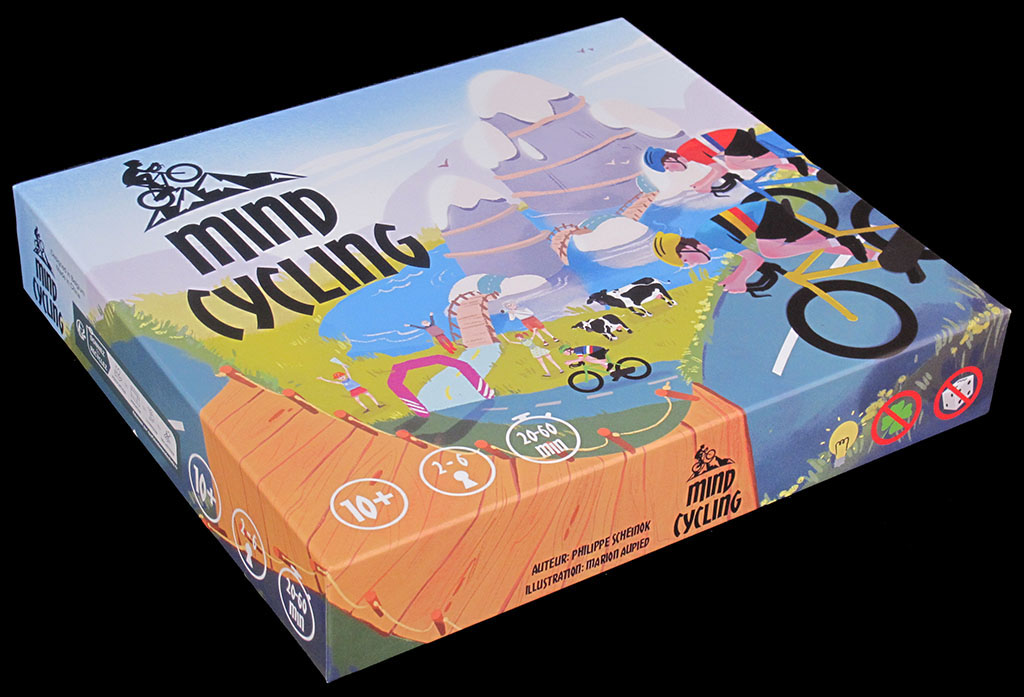
MIND CYCLING
Philippe Scheinok, Belgium, 2024

As I have written when talking about this other recent game, I am often approached by people who are at various stages of the process of designing a cycling game. Sometimes they have just a vague idea, sometimes their game is almost ready. In the case of Mind Cycling, when I received Philip Sheinok's first email some months ago, the latter was true. The game was almost ready, a Kickstarter crowdfunding campaign was going to be launched in a few days, and he didn't really need anything from me except possibly some promotion. Unfortunately, this site is kept at my own pace and was never intended to promote games, much less ones that I do not have in my hands. Anyway, it looks like my help was not much needed indeed, since the Kickstarter goal was reached in a few days (now the game has its own website -scroll down for the link- where it can be purchased), and the game eventually reached its backers in March 2024.
In his first email, Philip described the game as (I quote) "a completely innovative board game about cycling that leaves no room for chance unlike all the existing cycling games on the market today". Needless to say, this is the kind of description that makes me suspicious, for a number of reasons:
(a) I have heard (or rather read) the sentence "I have a completely innovative game" (or worse) a few dozen times. In fact, it is rare for a game inventor not to believe that his game is innovative.
(b) The game "leaves no room for chance": that's a strong philosophical assumption about chance and life, to say the least; my personal opinion is that there always will be a degree of chance involved in a multi-player game, even if there aren't dice, cards, or other randomizers involved.
(c) "... unlike all the existing cycling games on the market today": Of course, we may argue about what exactly expressions like "on the market" and "today" mean, but at the time of writing there are fourteen games in the "games of no chance" section of this site, including Mind Cycling. Some of them are even available for free download.So, I decided to wait until I received the game to judge it. Which, after all, seems like a wise thing to do.
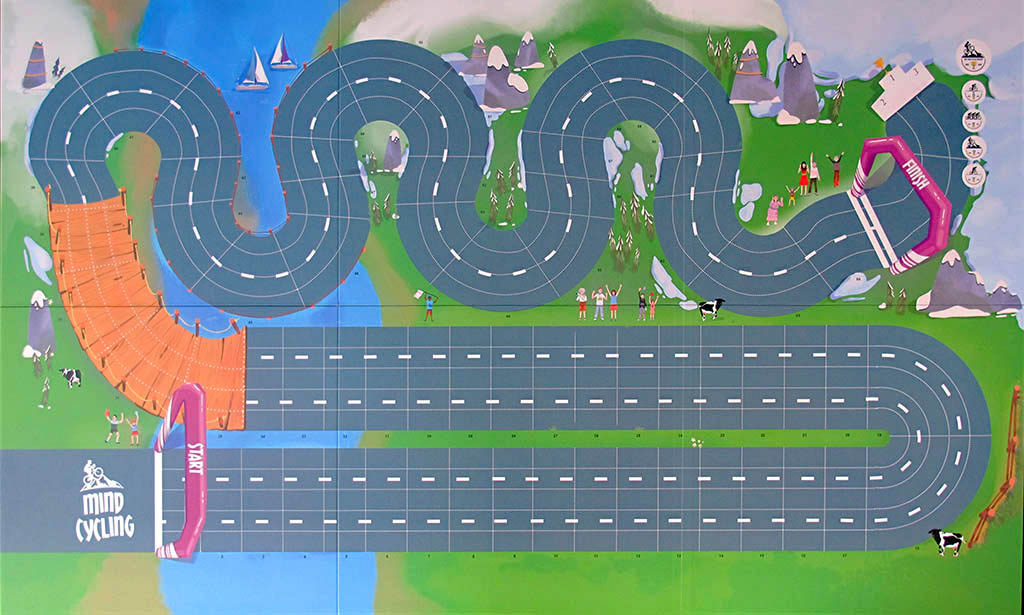
The first thing that strikes you about this game is the size of the board. While the box is not particularly big (it measures 35 x 31 x 7 cm), the unfolded board is 101 x 60 cm. You need a big table to play this one.

The game includes a peloton of 36 carboard cyclists, 33 mm long, in six teams. There is also a seventh blank team, which is not really needed but is intended to be customised in the colours of your choice. A nice idea, and it can also be used for spares if necessary.
These cyclists are of three different types: sprinters, climbers, and domestiques. They are distinguished by the colours of their helmets and backgrounds. Furthermore, domestiques not only have blue helmets and backgrounds, but are further distinguished from the rest by being mounted on blue (as opposed to black) bases at the beginning of the game. While having three types of riders is not unusual, having one of them specified as "domestique" is a little less frequent.

The cyclists are actually quite cute, as you can see
The blue bases indicate that the cyclist is carrying a water bottle, and bases can be swapped between teammates during the game. While the fact that domestiques do not drink water could raise ethical issues, this base-swapping is nevertheless an elegant way of addressing the energy management aspect of the game. (In case you wonder, extra black bases are needed, and they are included with the game, of course).
Do not misunderstand me: the rules do not say that the domestiques cannot drink (in fact, they can), but there is a rule called "fatigue of domestique" that says that a domestique who has no more bottle is exhausted, can no longer follow the wheel of the rider in front of him nor take any relay, and has finished his work. There are no such rules for climbers and sprinters, so probably the best tactical decision for a team is that the domestiques stick to their role as water carriers and refrain from drinking.
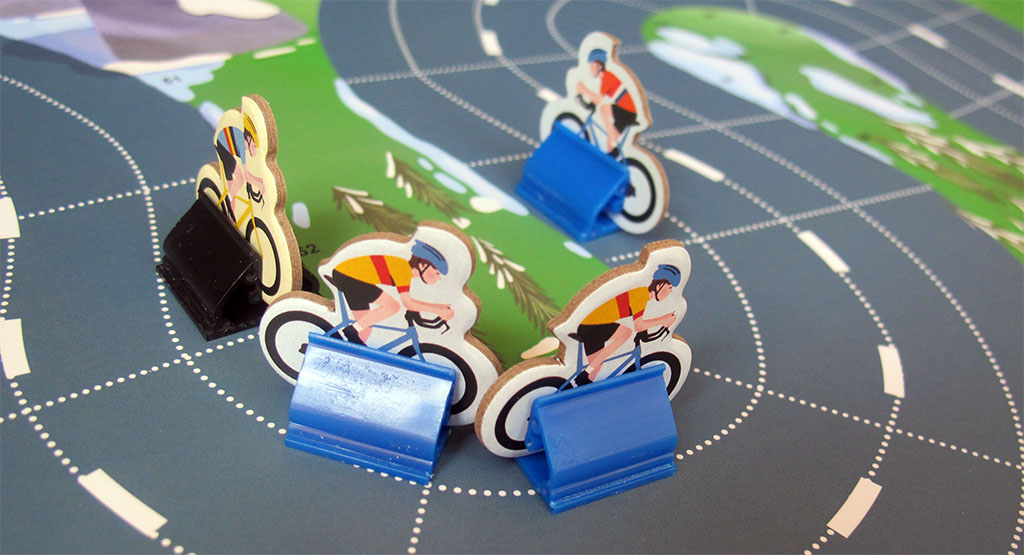
Speaking of tactical playing, there is also a drafting rule in this game, as is almost unavoidable in a tactical cycling game without randomizers.
By the way, the rules of this game are unexpectedly short and concise. They just take 5 pages of an A5-sized booklet, are in eight different languages (!), and, most crucially, they are available online, so I let it up to you to read them and agree or disagree with what I say.
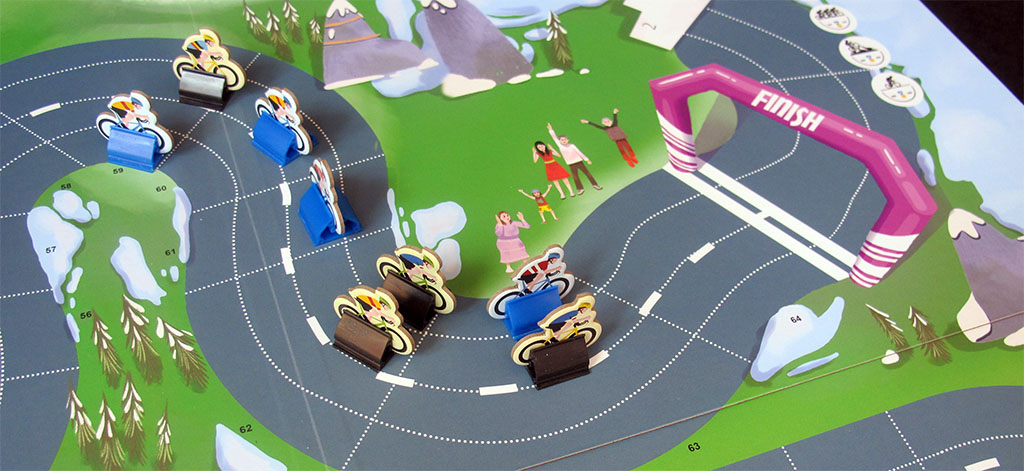
One thing that I should nevertheless mention about the rules is that this game represents a one-day race (no rules are provided for timekeeping on a stage race) but, while the course does not seem to offer many variations at first sight, the game includes five removable tabs that will mark the plain, mountain, and sprint sections, so you can have endless variations of the road.
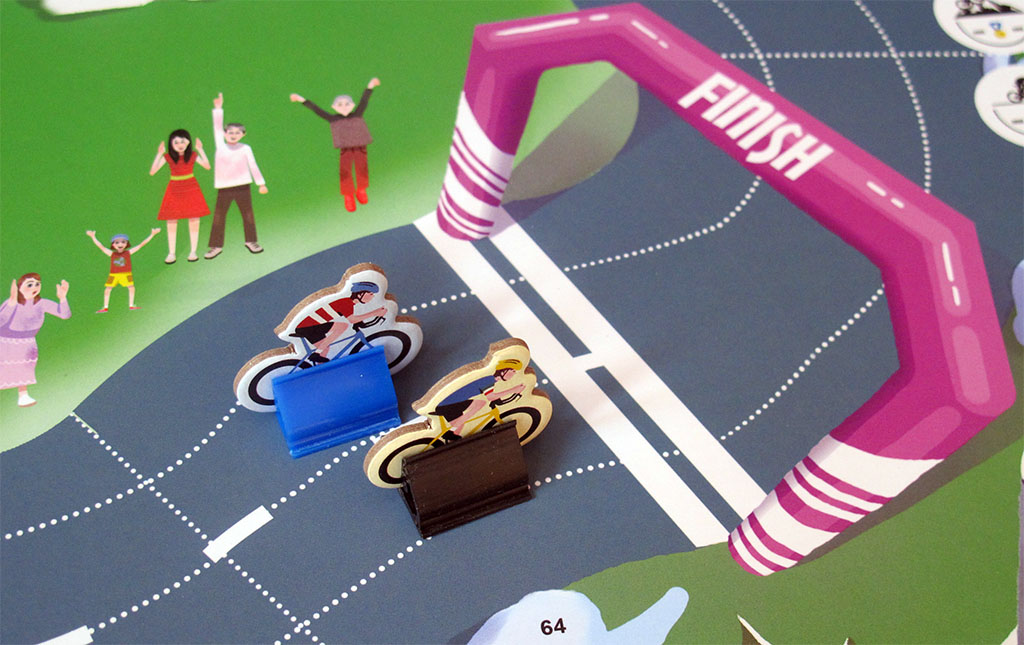
Furthermore, not all races use all cyclists. In shorter games, players choose a team of fewer riders, and this sure is a tactical choice, and one that makes a different game every time too.
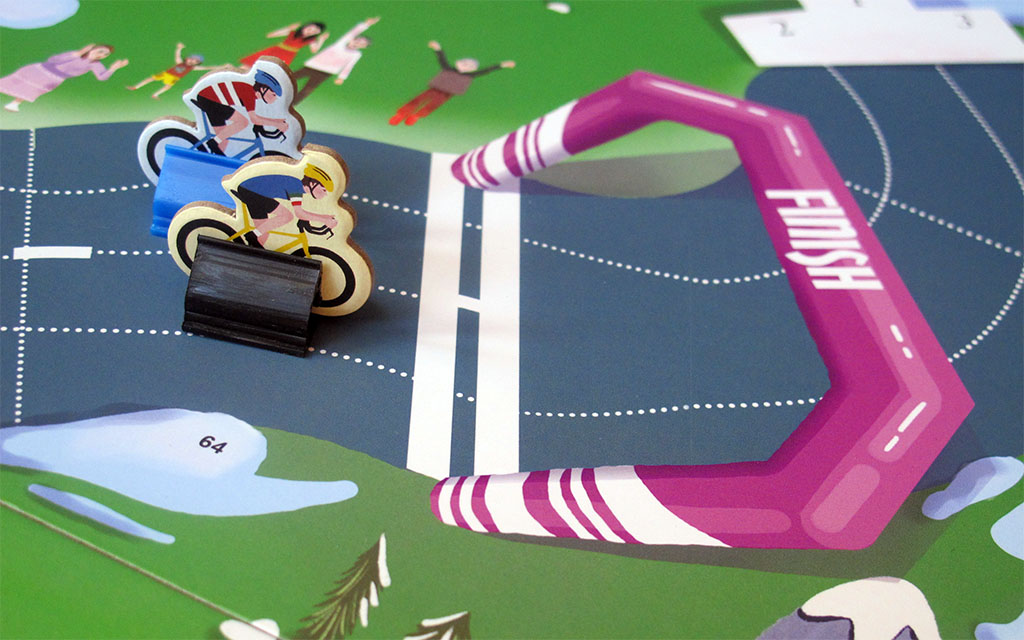
The graphic design of this game is by Marion Aupied, and I particularly like the 3D finish line banner (check the pictures above) which flattens onto the ground as you approach (well, not exactly: it depends from where you look; check the picture below).
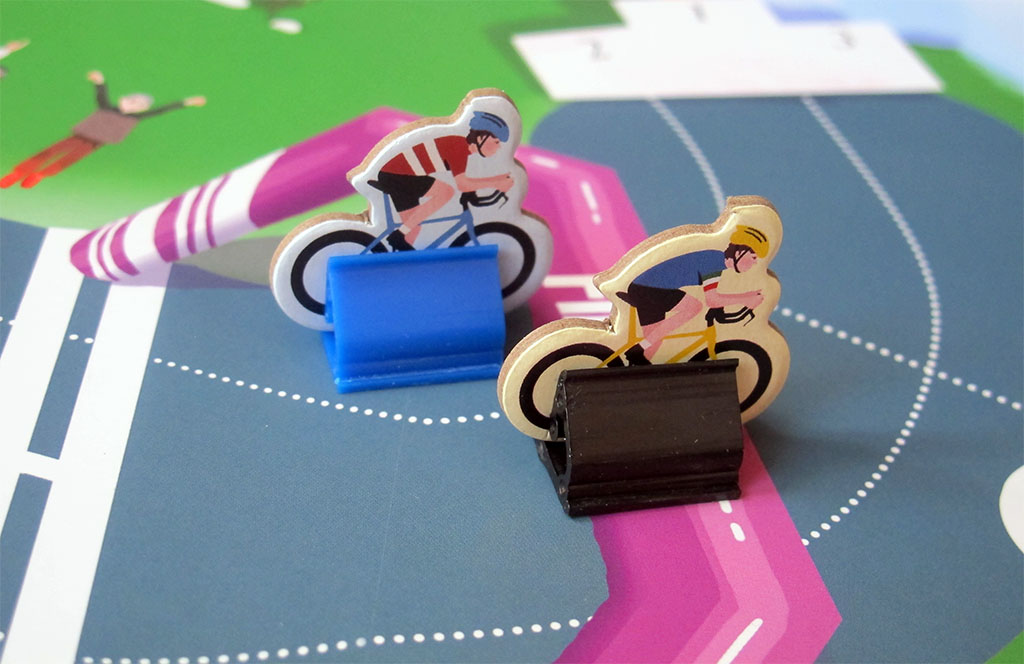
Ouch, we are riding over the banner!
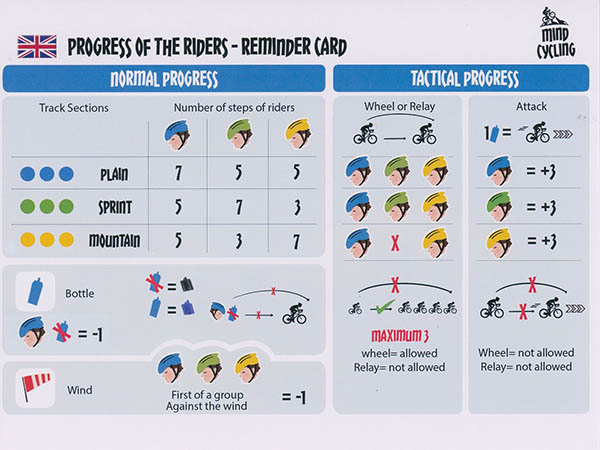
Memo cards (also in eight different languages) included
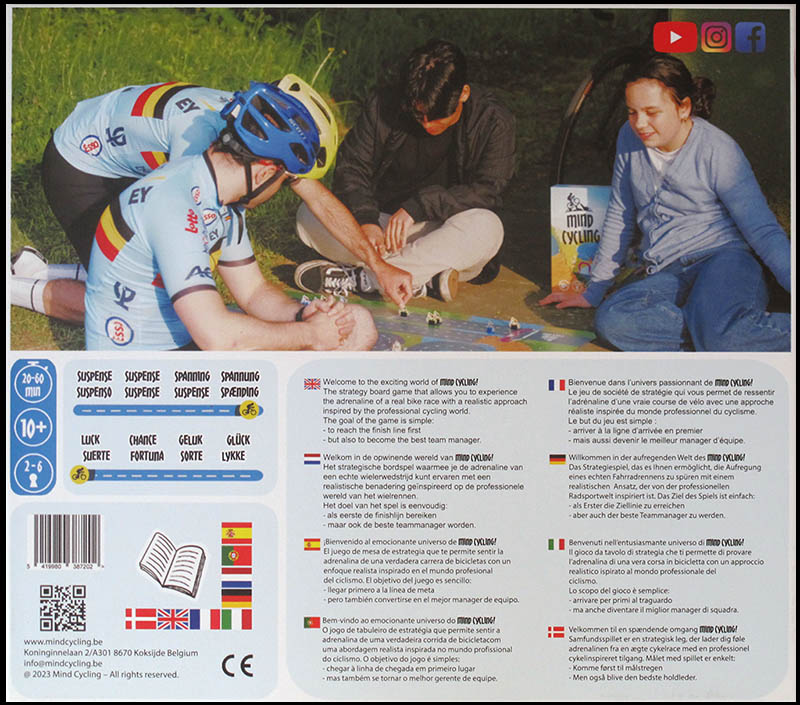
Back of the box
Click here to check the game's website
Description written in May, 2024.
 |
 |
 |
 |
 |
|
CULTURE IDEAS |
TOTUM REVOLUTUM THUMBNAILS |
NAMES ALPHABETICAL |
CATEGORIES LISTS |
WHAT'S NEW BLOG |